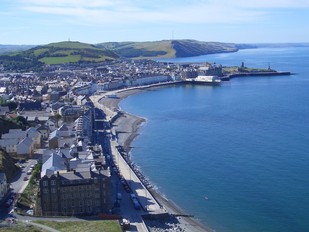When I wasn’t traveling or working, I began to spend long afternoons in the National Library of Wales, reading about the Gold Rush, and found myself connecting with the landscape and the history I had left as I never had before. The Gold Rush was no longer a rusted Pelton wheel in my town square, or “a time in American history when…” The Gold Rush was young, hopeful, sunburned, broken-soled men and women, living far from home in tinderbox shacks with canvas walls. I recognized myself, not in their circumstances, but in their desire for adventure and reinvention, and in their grudging homesickness. I recognized the resilience and the cost of the get-rich-quick mentality I had taken for granted in California. I recognized how cycles of hope, opportunism, and failure, shape communities all over the world. History, at least recorded history, is built on wins and losses, booms and busts.
Then, one day in a reading room the size of a high school gymnasium, I discovered a photograph of an androgynous young man, or a woman dressed as a boy, glaring from the pages of Susan Lee Johnson’s Roaring Camp. An oversized panama hat shaded haunted eyes; a stained flannel draped from narrow shoulders; the gun cinched to her waist with a belt looked more like a prop than a threat. As I looked at that photograph, my obsession with the history became a story.
What if, I wondered. What if a stranger came to town… What if a young woman dressed as a boy on the run from the law…
Then I needed a town for my stranger, for Alex, and a rag-tag supporting cast of men with constitutions sturdy enough and personalities large enough to survive the labors their dreams demanded of them. Soon Emaline and the Victoria Inn emerged as the center of the town, a reason, beyond survival, luck and riches, for a community, for a story, and for a writer to grow.
Funny to think I left California to become a writer. The first story I had to tell brought me back again.

 RSS Feed
RSS Feed
